Organisation Multi-national | ||
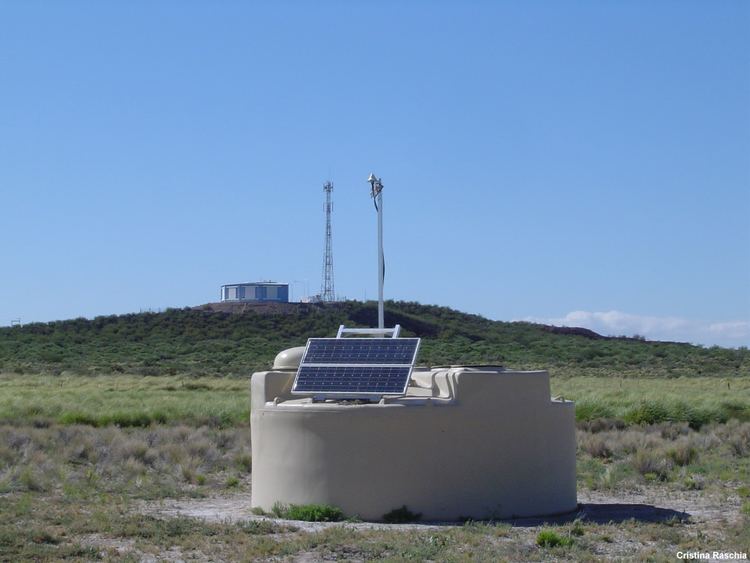 | ||
Altitude 1330 m–1620 m, average ~1400 m Built 2004–2008 (and taking data during construction) Telescope style Hybrid (Surface + Fluorescence detectors) | ||
Pierre auger observatory
The Pierre Auger Observatory is an international cosmic ray observatory in Argentina designed to detect ultra-high-energy cosmic rays: sub-atomic particles traveling nearly at the speed of light and each with energies beyond 1018 eV. In Earth's atmosphere such particles interact with air nuclei and produce various other particles. These effect particles (called an "air shower") can be detected and measured. But since these high energy particles have an estimated arrival rate of just 1 per km2 per century, the Auger Observatory has created a detection area of 3,000 km2 (1,200 sq mi) — the size of Rhode Island, or Luxembourg — in order to record a large number of these events. It is located in the western Mendoza Province, Argentina, near the Andes.
Contents
- Pierre auger observatory
- Pierre auger observatory 2009
- Physical background
- Earlier observatories
- Surface detector SD
- Fluorescence detector FD
- Designing and building
- Developments
- Results
- In popular culture
- References
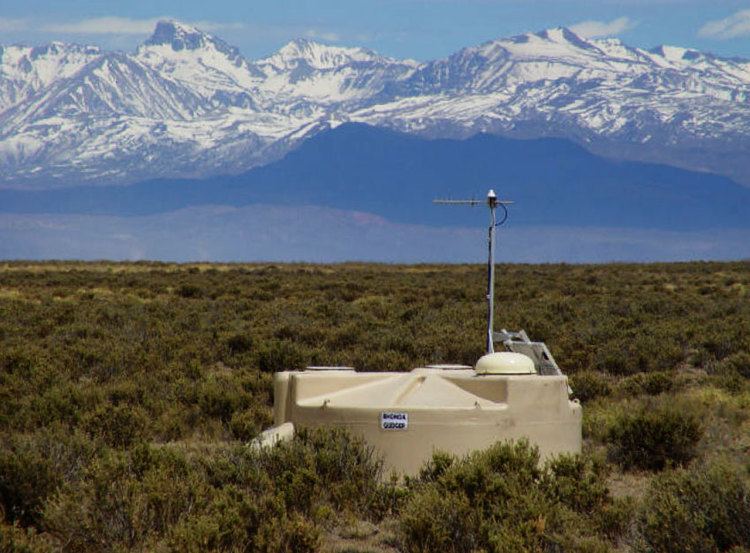
Construction began in 2000, the observatory has been taking production-grade data since 2005 and was officially completed in 2008. The northern site was to be located in southeastern Colorado, United States and hosted by Lamar Community College. It also was to consist of water Cherenkov detectors and fluorescence telescopes, covering the area of 10,370 km2 — 3.3 times larger than Auger South. Unfortunately, in late 2010 it was officially decided the US would not host the northern observatory and as of early 2011, the project's future remains uncertain.
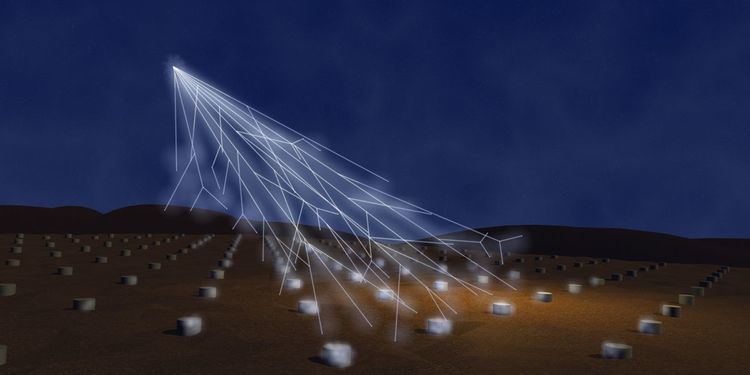
The observatory was named after the French physicist Pierre Victor Auger. The project was proposed by Jim Cronin and Alan Watson in 1992. Today, more than 500 physicists from nearly 100 institutions around the world are collaborating to maintain and upgrade the site in Argentina and collect and analyse the measured data. The 15 participating countries shared the $50 million construction budget, each providing a small portion of the total cost.
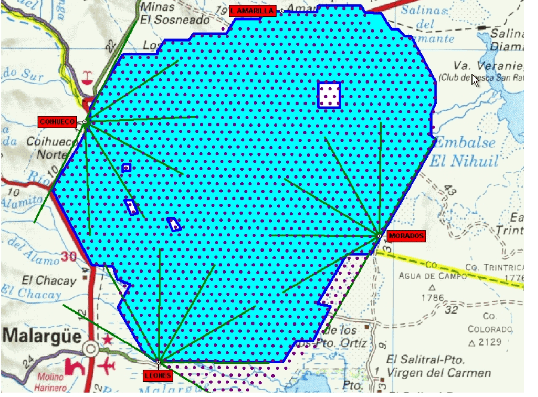
Pierre auger observatory 2009
Physical background
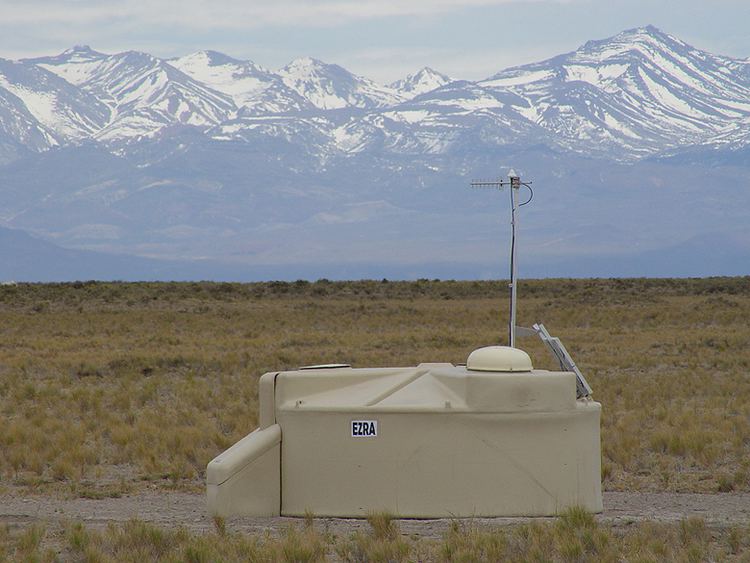
From outer space, ultra-high-energy cosmic rays reach Earth. These consist of single sub-atomic particles (protons or atomic nuclei), each with energy levels beyond 1018 eV. When such a single particle reaches Earth atmosphere, it has its energy dissipated by creating billions of other particles: electrons, photons and muons, all near the speed of light. These particles spread longitudinally (perpendicular to the single particle incoming route), creating a forward moving plane of particles, with higher intensities near the axis. Such an incident is called an "air shower". Passing through the atmosphere, this plane of particles creates UV light, invisible to the human eye, called the fluorescing effect, more or less in the pattern of straight lightning traces. These traces can be photographed at high speed by specialised telescopes, called Fluorescence Detectors, overlooking an area with at a slight elevation. Then, when the particles reach the Earth's surface, they can be detected when they arrive in a water tank, where they cause visible blue light due to the Cherenkov effect. A sensitive photoelectric tube can catch these impacts. Such a station is called a water Cherenkov Detector or 'tank'. The Auger Observatory has both types of detectors covering the same area, which allows for very precise measurements.
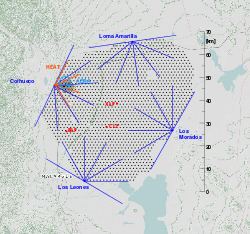
When an air shower hits multiple Cherenkov Detectors on the ground, the direction of the ray can be calculated using basic geometrics. The longitudinal axis point can be determined from the densities in each affected ground station. Depending on the time difference of impact places, the angle of the axis can be determined. Only when the axis would be vertical, all ground detectors register at the very same moment in time, and any tilting of the axis will cause a time difference between earliest and latest touchdown.
Earlier observatories
Cosmic rays were discovered in 1912 by Victor Hess. He measured a difference in ionisation at different heights (using the Eiffel tower and a Hess-manned hot air balloon), an indication of the atmospheric thinning (so spreading) of a single ray. Influence of the Sun was ruled out by measuring during an eclipse. Many scientists researched the phenomenon, sometimes independently, and in 1937 Pierre Auger could conclude in detail that it was a single ray that interacted with air nuclei, causing an electron and photon air shower. At the same time, the third particle muon was discovered (behaving like a very heavy electron).
Surface detector (SD)
In 1967 University of Leeds had worked with a water Cherenkov detector (or surface station; a small water basin, 1.2 m deep; also called tank) and created a 12 km2 detection area Haverah Park using 200 such tanks. They were arranged in groups of four in a triangular (Y) ground pattern, the triangles in different sizes. The observatory worked for 20 years, and produced the main design parameters for the ground detection system at Auger Observatory. It was Alan Watson who in the later years led the research team and subsequently co-initiated Auger Observatory Collaboration.
Fluorescence detector (FD)
Meanwhile, from the Volcano Ranch (New Mexico, 1959–1978), the Fly's Eye (Dugway, Utah) and its successor the High Resolution Fly's Eye Cosmic Ray Detector called "HiRes" or "Fly's Eye" (University of Utah), the technique of the fluorescence detector was developed. These are optical telescopes, adjusted to picture UV light rays when looking over a surface area. It uses faceted observation (hence the fly's eye reference), to produce pixeled pictures at high speed. In 1992, James Cronin led the research and co-initiated the Auger Observation Collaboration.
Designing and building
In 1995 at Fermilab, Chicago, the basic design was made for the Auger observatory. For half a year, many scientists produced the main requirements, and a cost estimation, for the projected Auger. The observatory's area had to be reduced from 5000 km2 to 3000 km2.
When construction began, a full scale prototype was set up first: the Engineering Array. This array consisted of the first 40 ground detectors and a single fluorescence detector. All were fully equipped. The engineering array operated for 6 months in 2001 as a prototype; it was later integrated into the main setup. It was used to make more detailed design choices (like which type of PMT to use, and tank water quality requirements) and to calibrate.
In 2003, it became the largest ultra-high energy cosmic ray detector in the world. It is located on the vast plain of Pampa Amarilla, near the town of Malargüe in Mendoza Province, Argentina. The basic set-up consists of 1600 water Cherenkov Detectors or 'tanks', (similar to the Haverah Park experiment) distributed over 3,000 square kilometres (1,200 sq mi), along with 24 atmospheric Fluorescence Detector telescopes (FD; similar to the High Resolution Fly's Eye) overseeing the surface array.
The Pierre Auger Observatory is unique in that it is the first experiment that combines both ground detectors and fluorescence detectors at the same site thus allowing cross-calibration and reduction of systematic effects that may be peculiar to each technique. The Cherenkov detectors use three large photomultiplier tubes to detect the Cherenkov radiation produced by high-energy particles passing through water in the tank. The time of arrival of high-energy particles from the same shower at several tanks is used to calculate the direction of travel of the original particle. The fluorescence detectors are used to track the particle air shower's glow on cloudless moonless nights, as it descends through the atmosphere.
To support the atmospheric measurements (FD measurements), supporting stations are added to the site:
Developments
Work is ongoing ( to) on upgrades to the observatory, including:
Results
The observatory has been taking good-quality data since 2005 and was officially completed in 2008.
In November 2007, the Auger Project team announced some preliminary results. These showed that the directions of origin of the 27 highest-energy events were strongly correlated with the locations of active galactic nuclei (AGNs). The results support the theory that at the centre of each AGN is a large black hole exerting a magnetic field strong enough to accelerate a bare proton to energies of 1020 eV and higher.
The anisotropy of cosmic rays above 1019 eV has been studied and no significant difference from isotropic flux has been seen in an analysis with the telescope array. Searches have found no point sources of EeV neutrons or photons.
The Pierre Auger Collaboration has made available (for outreach purposes) 1 percent of the ground array events below 50 EeV (1018 eV). Higher energy events require more physical analysis and are not published this way. The data can be explored at the Public Event Display web site.
In popular culture
Argentina issued 100,000 postage stamps honouring the observatory on 14 July 2007. The stamp shows a surface detector tank in the foreground, a building of fluorescence detectors in the background, and the expression "1020 eV" in large lettering.
